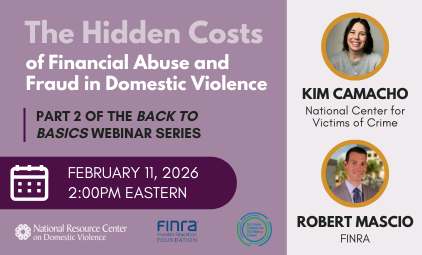Know the numbers: Most recent NISVS Sexual Violence Report now available
CDC’s latest National Intimate Partner and Sexual Violence Survey (NISVS): 2016/2017 Report on Sexual Violence shows that sexual violence continues to be common, starts early, and people from some racial and ethnic minority groups are heavily burdened by sexual violence victimization.
Key Findings
- Prevalence by sex: Over half of women and about a third of men reported being victims of sexual violence involving physical contact at some point in their lives.
- Prevalence by race and ethnicity: American Indian or Alaska Native people and people who identify with more than one race are heavily burdened by sexual violence victimization.
- Type of perpetrator: Most victims of sexual violence knew their perpetrator. For most forms of sexual violence, most victims reported that their perpetrators were acquaintances or intimate partners.
- Age at first victimization: Most victims of all forms of sexual violence involving physical contact reported that their first victimization happened before they were 25 years old. Additionally, many victims (between a third and a half of victims for the forms of sexual violence examined) reported that their first victimization was during childhood (before 18 years old).
- Sexual violence has immediate and long-term impacts. Many victims of rape, being made to penetrate, and sexual coercion reported immediate impacts from the violence including injury, fear, concern for safety, sexually transmitted infections, and pregnancy (for women). In addition, the prevalence of several health conditions (e.g., asthma, frequent headaches, chronic pain, difficulty sleeping) was higher for sexual violence victims compared to nonvictims for both women and men.
The survey instrument administered in 2016/2017 represents a change in data collection from previous years (2010–2012 and 2015). Because of changes to the NISVS survey methodology, users are discouraged from comparing current data to findings from prior survey years.
This report is the third in a series of NISVS reports using the most recent 2016/2017 data. The 2016/2017 Methodology Report and 2016/2017 Report on Stalking were released in January. Subsequent report topics will be released over the next several months, including reports on intimate partner violence and victimization by sexual orientation, as well as a state report. There is also a data assessment report describing the efforts taken to assess the representativeness of the 2016/2017 data.
Learn More
- Report on Sexual Violence
- The National Intimate Partner and Sexual Violence Survey
- Reports and Publications
- Key Terms and FAQs















